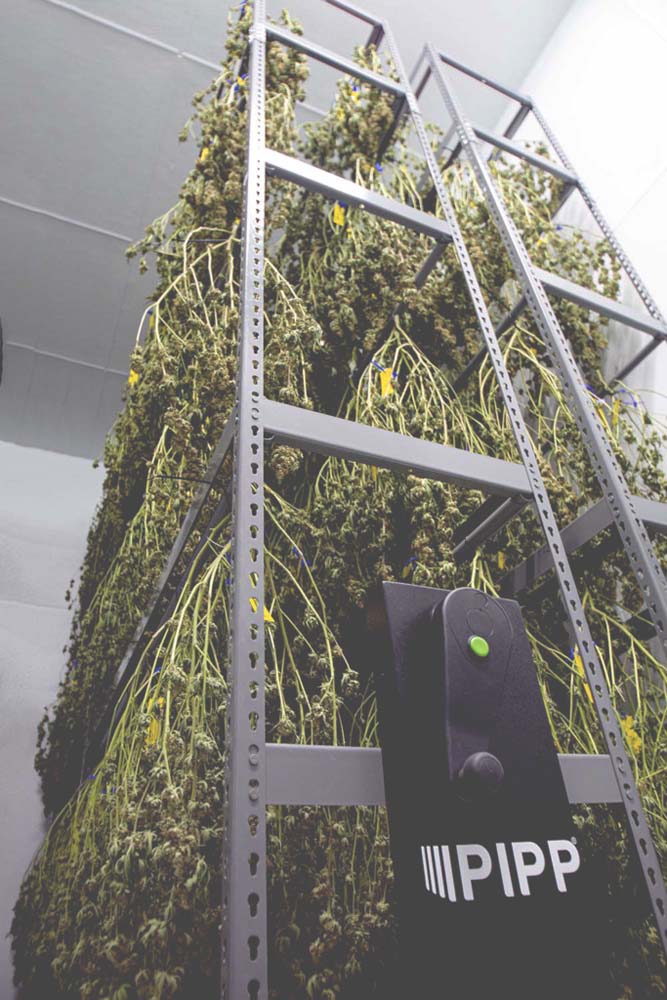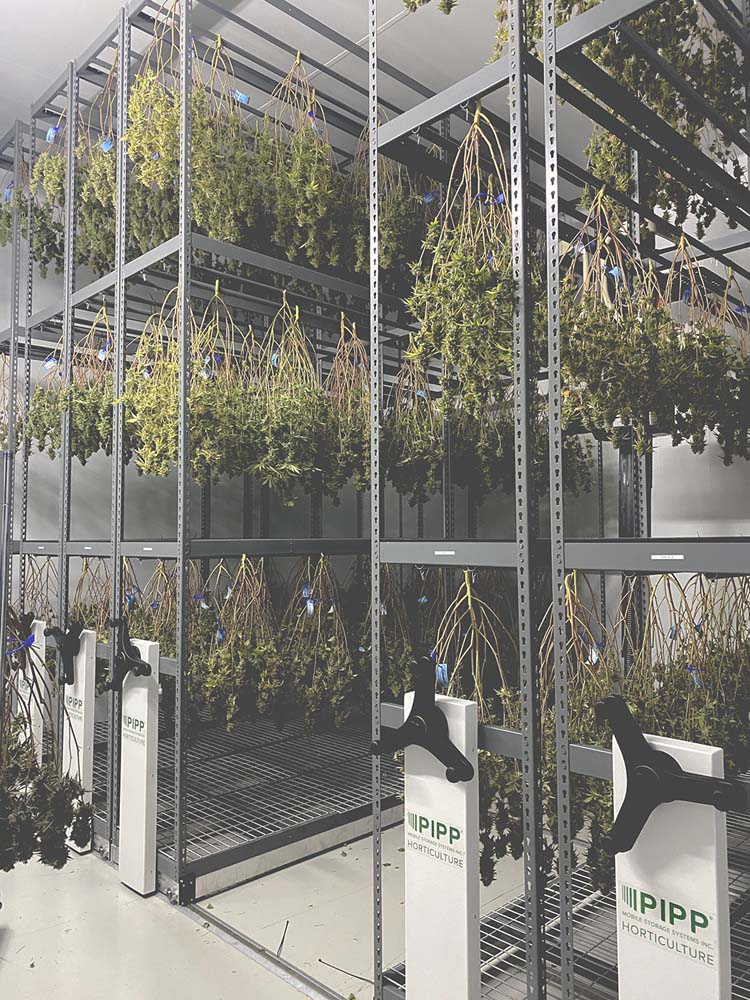Cannabis production strategies may differ from one facility to another, but most facilities share a common goal: to produce the highest quality product at the lowest cost. One area of the cultivation cycle that is often overlooked but has great potential for optimization is the cannabis drying and curing process.
Common Drying & Curing Processes
For many cultivators, a common drying and curing process looks like this:
- Harvest, weigh, and transfer cannabis to the drying room. This is usually done with the use of bins or totes.
- Then, one by one, manually hang the plants on wire, pipe, hangers, hooks and/or racking.
- Once the plants have been dried, manually remove each plant and place them back into the bins or totes.
- The plants are then transferred to trimmers to process the cannabis into the finished product.
Each transfer event has significant labor costs, but more importantly, they can reduce the quality of the cannabis by degrading trichomes, associated cannabinoids, and terpene content.
For many, LEAN farming and manufacturing is a goal and driver for the production process, but many can fall short due to the process above. Why?
It’s cost-intensive and it can reduce the quality and value of the product.
First Things First: Ditch The Bins
Many commercial growers use plastic bins or totes to help them harvest. A cheap and simple solution, binning plants have been a common method amongst growers. Unfortunately, it greatly increases labor requirements due to the many staff and non-value-adding touchpoints with the plants. These touchpoints also negatively impact the final quality of the product as the terpenes and trichomes are disturbed each time.
Bins or totes also present additional and unnecessary cross-contamination, workflow, and labor challenges. They need to be cleaned and sanitized after each batch or during daily use. Many facilities are not set up or staffed appropriately to properly clean and sanitize bins and totes regularly. In addition, bins and totes take up a tremendous amount of space, which is often not taken into consideration during the facility design process. Often stacked, if these bins are not cleaned or have been on the floor, operators risk contaminating their cannabis plants and dried flowers that come in contact with the inside of the bins.
Labor is the biggest cost for a cultivation operation. And as it so happens, the harvest and the post-harvest team is often the largest department by headcount.
By introducing equipment, such as drying carts or racks, operators can decrease their labor costs while increasing product quality, all without the use of bins or totes.
Optimize Your Drying Process
An easy way to tell them apart is to remember this: dying carts bring work to the workers while cannabis drying racks bring workers to the work.
DRYING CARTS ARE MOBILE BY DESIGN. Staff roll the drying carts without the need for hangers or hooks. The drying carts are then transferred to the drying room. Once the plants have dried, the carts are then rolled into the trimming room. The product moves efficiently around the facility with little to no touching of the actual plants.
DRYING RACKS differ in that staff must still bring plants to the racks where they manually hang from the rack. A mobile drying cart can still be used for the transfer to eliminate the use of bins or totes. However, what sets these drying racks apart from common drying setups is that the racks can span the full height of the room, taking advantage of not only total available square feet but cubic feet as well. There are pros and cons to both options. Ultimately, your operation’s capacity, efficiency, and labor demands will be the deciding factor.


Space Requirements
The carts must be stored when not in use, and you’ll also need adequate space in your flower room for the carts to roll through the aisles. We recommend a minimum of 28” width aisles. If you’re already tight on space in the drying rooms and are using a trellis or cable wire, installing mobile drying racks will greatly optimize your room’s plant-drying capacity. Drying racks can help transform a tight, restricted space into an efficient one that supports your scaling business. To get an idea of how much space is required for either racks or carts, we crunched some numbers for you.
Here, you can see how much square footage of drying space is required for each equipment option. For this example, let’s consider 1,000 harvested cannabis plants. The following space is required in your drying area for each solution (the range accounts for plant size and density):
• PIPP 2-tier drying carts: 300-600 sq. ft.
• PIPP 3-tier drying carts: 200-400 sq. ft.
• PIPP mobile drying racks (4-tiers): 200-400 sq. ft.
You can see that the available space in the facility is the main consideration here.
If space is not an issue, the ideal choice is drying carts for the points mentioned above: lower labor costs and higher quality product.
In Conclusion
Now that you’ve made it this far, you’re probably getting a good idea of which option (drying racks or carts) might work best for your grow space. For assistance in selecting the best drying solution for your operation, download our latest e-book or contact the team at PIPP Horticulture today!


